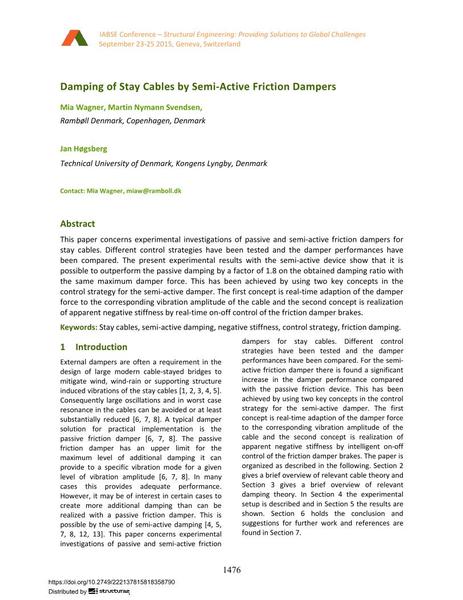Damping of Stay Cables by Semi-Active Friction Dampers

|
|
|||||||||||
Bibliografische Angaben
| Autor(en): |
Mia Wagner
(Rambøll Denmark, Copenhagen, Denmark)
Martin Nymann Svendsen (Rambøll Denmark, Copenhagen, Denmark) Jan Høgsberg (Technical University of Denmark, Kongens Lyngby, Denmark) |
||||
|---|---|---|---|---|---|
| Medium: | Tagungsbeitrag | ||||
| Sprache(n): | Englisch | ||||
| Tagung: | IABSE Conference: Structural Engineering: Providing Solutions to Global Challenges, Geneva, Switzerland, September 2015 | ||||
| Veröffentlicht in: | IABSE Conference Geneva 2015 | ||||
|
|||||
| Seite(n): | 1476-1483 | ||||
| Anzahl der Seiten (im PDF): | 8 | ||||
| Jahr: | 2015 | ||||
| DOI: | 10.2749/222137815818358790 | ||||
| Abstrakt: |
This paper concerns experimental investigations of passive and semi-active friction dampers for stay cables. Different control strategies have been tested and the damper performances have been compared. The present experimental results with the semi-active device show that it is possible to outperform the passive damping by a factor of 1.8 on the obtained damping ratio with the same maximum damper force. This has been achieved by using two key concepts in the control strategy for the semi-active damper. The first concept is real-time adaption of the damper force to the corresponding vibration amplitude of the cable and the second concept is realization of apparent negative stiffness by real-time on-off control of the friction damper brakes. |
||||
| Stichwörter: |
Schrägseile
|
||||

